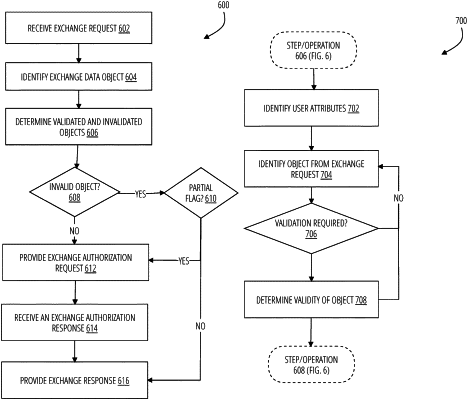| CPC H04L 63/105 (2013.01) [H04L 63/061 (2013.01); H04W 12/0471 (2021.01)] | 20 Claims |

|
1. A computer-implemented method comprising:
receiving, by one or more processors and using a partner interface, an exchange request for executing a value-based exchange, wherein the exchange request is indicative of a universally unique ephemeral key (UUEK) that comprises an exchange identifier;
identifying, by the one or more processors, an exchange data object based at least in part on the exchange identifier, wherein the exchange data object comprises (i) an instrument identifier for a service provider instrument of a member platform and (ii) a user identifier for a user associated with the service provider instrument;
determining, by the one or more processors, one or more validated objects and one or more invalidated objects for the exchange request based at least in part on one or more user attributes corresponding to the user;
providing, by the one or more processors and using a service provider interface, an exchange authorization request to the member platform, wherein the exchange authorization request is indicative of the instrument identifier and the one or more validated objects for the exchange request;
receiving, by the one or more processors and using the service provider interface, an exchange authorization response that is indicative of at least one of an exchange approval or an exchange denial; and
providing, by the one or more processors and using the partner interface, an exchange response based at least in part on the exchange authorization response, wherein the exchange response is indicative of (i) the exchange approval or the exchange denial and (ii) the one or more invalidated objects for the exchange request.
|